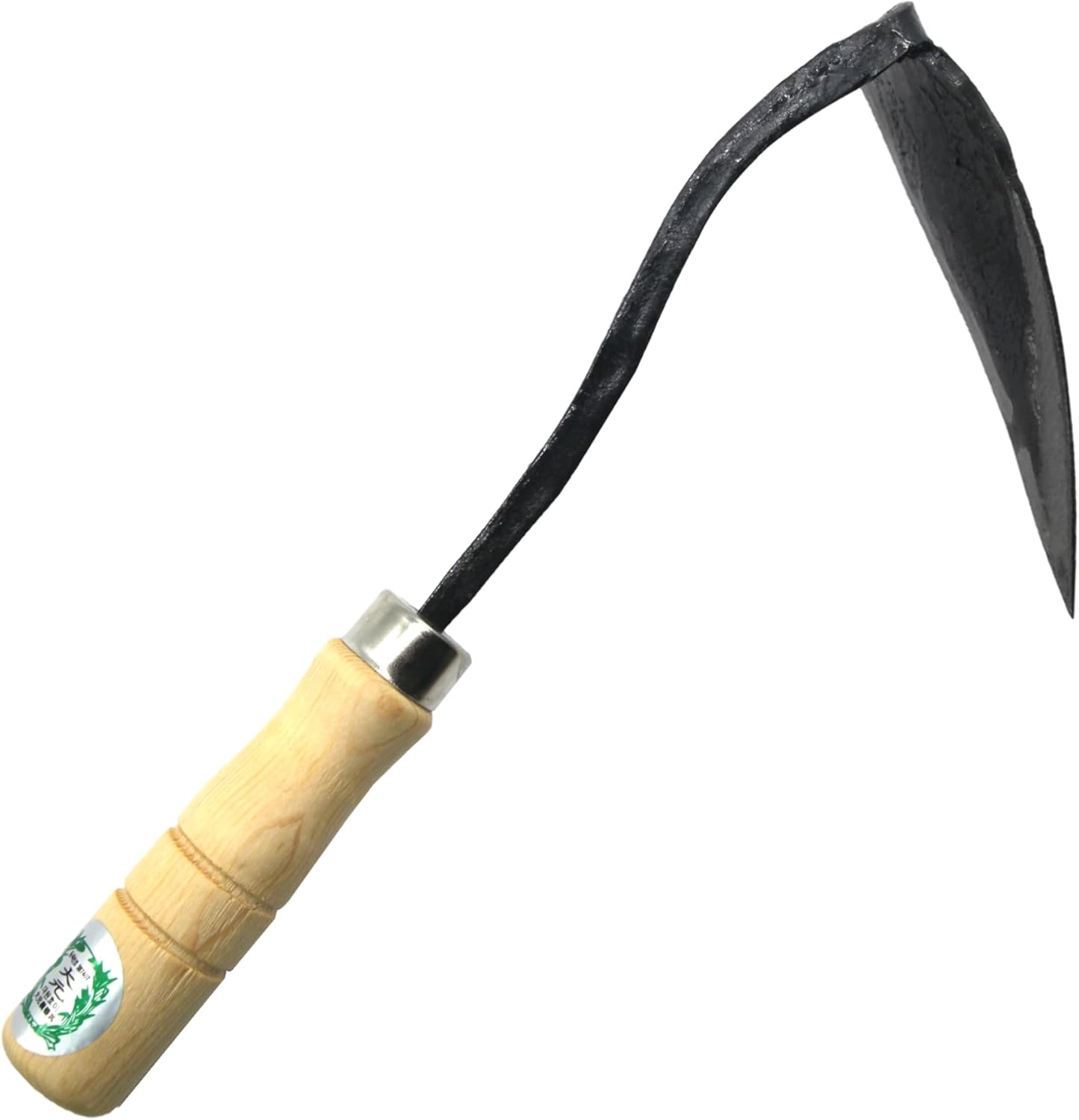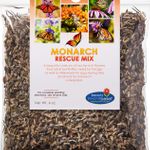Hi GPODers!
Yesterday we explored the joys (and beauty) of producing food through Mark’s vegetable garden in Vermont (Mark’s Ornamental Vegetable Garden in Vermont). Today we’re discussing another vital reason to garden, to produce the food and shelter that is crucial for pollinator and wildlife survival. This eco-friendly inspiration comes from Michelle Detwiler, a Pennsylvania-based landscape designer and owner of Wild About Native Plants, who specializes in native plants and sustainable landscapes. Her gardens prove that you don’t need to give up on beauty to plant up something beneficial.
Welcome to my habitat gardens in Southeastern Pennsylvania, Zone 7b. I choose plants with both beauty and wildlife in mind and have converted my space to native plantings over the last decade. Perched at the edge of an oak and hickory remnant in the Northern piedmont ecoregion, my soils are well-drained, and I maintain a diversity of habitat types including open sunny areas, shady woodlands, and a small wildlife pond. Nature finds encouragement in my space, as I welcome naturally occurring native tree and shrub saplings as well as perennials often considered weeds in other spaces. I also embrace big bold natives that support flying creatures of all sorts, and I’m sure to carefully steward my landscape through the seasons so as to support wildlife nesting needs in addition to floral abundance. My property is also on the Pollinator Pathway and attempts to capture as much rain water as possible through rain gardens for the health of the watershed.
 Summer is a time of floral abundance. The gardens are tall and lush. Blooming here are white-flowered wood aster (Eurybia divaricata, Zones 3–8) and flowering spurge (Euphorbia corollata, Zones 4–8) in the foreground with pink-flowered coastal plain Joe Pye weed (Eutrochium dubium, Zones 3–9) and yellow brown-eyed Susan (Rudbeckia triloba, Zones 4–7). Great blue lobelia (Lobelia siphilitica, Zones 4–9) sends up dense racemes of tubular blue flowers at the edge of the patio which is my favorite outdoor sitting spot to watch the bees, butterflies, and birds.
Summer is a time of floral abundance. The gardens are tall and lush. Blooming here are white-flowered wood aster (Eurybia divaricata, Zones 3–8) and flowering spurge (Euphorbia corollata, Zones 4–8) in the foreground with pink-flowered coastal plain Joe Pye weed (Eutrochium dubium, Zones 3–9) and yellow brown-eyed Susan (Rudbeckia triloba, Zones 4–7). Great blue lobelia (Lobelia siphilitica, Zones 4–9) sends up dense racemes of tubular blue flowers at the edge of the patio which is my favorite outdoor sitting spot to watch the bees, butterflies, and birds.
 Another view of these patio-hugging gardens shows off the red of cardinal flower (Lobelia cardinalis, Zones 3–9), a re-seeder responsible for much hummingbird happiness. I dot my windows with a washable white glass marker to make them more visible to birds—a window strike prevention technique requiring dots to be 2-4 inches apart.
Another view of these patio-hugging gardens shows off the red of cardinal flower (Lobelia cardinalis, Zones 3–9), a re-seeder responsible for much hummingbird happiness. I dot my windows with a washable white glass marker to make them more visible to birds—a window strike prevention technique requiring dots to be 2-4 inches apart.
 I also grow native thistles from seed like these field thistle (Cirsium discolor, Zones 3–9). They are biennial and seed around to fill holes and create surprises every August. In some years, there are loads of these tall beauties around the wildlife pond like you see here.
I also grow native thistles from seed like these field thistle (Cirsium discolor, Zones 3–9). They are biennial and seed around to fill holes and create surprises every August. In some years, there are loads of these tall beauties around the wildlife pond like you see here.
 They support an incredible array of wildlife like this large black and gold bumblebee…
They support an incredible array of wildlife like this large black and gold bumblebee…
 As well as the largest butterfly in my area, the Giant swallowtail—a species I only see when the thistles are blooming.
As well as the largest butterfly in my area, the Giant swallowtail—a species I only see when the thistles are blooming.
 Since I allow plants to die in place, a male goldfinch takes advantage of the thistle seeds for food and nesting material. Goldfinches nest after most other bird species while they wait for the thistle to mature, and I relish their estival company.
Since I allow plants to die in place, a male goldfinch takes advantage of the thistle seeds for food and nesting material. Goldfinches nest after most other bird species while they wait for the thistle to mature, and I relish their estival company.
 Just ahead of fall, giant sunflower (Helianthus giganteus, Zones 3–9)—an important keystone plant supporting pollinators and moth larvae in my area—steals the show (and the attention of bumble bees and pollen-specialist bees alike). This vigorous spreader intermingles with the red rose hips of Virginia rose (Rosa virginiana, Zones 3–8), a vigorously suckering native rose that I keep in a container in the middle of the garden to manage its spread.
Just ahead of fall, giant sunflower (Helianthus giganteus, Zones 3–9)—an important keystone plant supporting pollinators and moth larvae in my area—steals the show (and the attention of bumble bees and pollen-specialist bees alike). This vigorous spreader intermingles with the red rose hips of Virginia rose (Rosa virginiana, Zones 3–8), a vigorously suckering native rose that I keep in a container in the middle of the garden to manage its spread.
 One of my goals is to create stopover habitat for migrating birds—a space for them to safely rest and refuel during long journeys. My efforts are rewarded with visits by migrating warblers—like this sweet friend gleaning insects from the Joe Pye weed (Eutrochium purpureum, Zones 4–9) just outside of my kitchen window.
One of my goals is to create stopover habitat for migrating birds—a space for them to safely rest and refuel during long journeys. My efforts are rewarded with visits by migrating warblers—like this sweet friend gleaning insects from the Joe Pye weed (Eutrochium purpureum, Zones 4–9) just outside of my kitchen window.
 In fall, the purple flowers of aromatic aster (Symphyotrichum oblongifolium, Zones 3–8) and red foliage of smooth sumac (Rhus glabra, Zones 3–9) greet visitors at my sunny roadside entry.
In fall, the purple flowers of aromatic aster (Symphyotrichum oblongifolium, Zones 3–8) and red foliage of smooth sumac (Rhus glabra, Zones 3–9) greet visitors at my sunny roadside entry.
 In spring, the woodland walk in my upper gardens host native wildflowers like the perennial ground cover golden ragwort (Packera aurea, Zones 3–8) with yellow flowers on the left and purple phacelia (Phacelia bipinnatifida, Zones 5–8), a biennial with purple flowers on the right. Eastern redbud (Cercis canadensis, Zones 4–8) and common sassafras (Sassafras albidum, Zones 4–9) saplings anchor the sub canopy here. I collect white pine needles that fall on the driveway to dress the path and create softness under foot.
In spring, the woodland walk in my upper gardens host native wildflowers like the perennial ground cover golden ragwort (Packera aurea, Zones 3–8) with yellow flowers on the left and purple phacelia (Phacelia bipinnatifida, Zones 5–8), a biennial with purple flowers on the right. Eastern redbud (Cercis canadensis, Zones 4–8) and common sassafras (Sassafras albidum, Zones 4–9) saplings anchor the sub canopy here. I collect white pine needles that fall on the driveway to dress the path and create softness under foot.
 Perennial stems and seed heads remain in winter in my space to support the nesting needs of native bees and other insects while also feeding winter birds. I like the structure that they provide and the seasonality of senescence as winter transitions to spring. (And I like the dog who looks to be having a ball in this garden, too!)
Perennial stems and seed heads remain in winter in my space to support the nesting needs of native bees and other insects while also feeding winter birds. I like the structure that they provide and the seasonality of senescence as winter transitions to spring. (And I like the dog who looks to be having a ball in this garden, too!)
Thank you so much for sharing your wildlife wonderland and sustainable gardening expertise with us, Michelle! Your gardens truly look like the epitome of tending the earth for better results for all who inhabit, and it is an inspiration for anyone wanting to add more native plants to their space.
Have a garden you’d like to share?
Have photos to share? We’d love to see your garden, a particular collection of plants you love, or a wonderful garden you had the chance to visit!
To submit, send 5-10 photos to [email protected] along with some information about the plants in the pictures and where you took the photos. We’d love to hear where you are located, how long you’ve been gardening, successes you are proud of, failures you learned from, hopes for the future, favorite plants, or funny stories from your garden.
Have a mobile phone? Tag your photos on Facebook, Instagram or Twitter with #FineGardening!
Do you receive the GPOD by email yet? Sign up here.
Fine Gardening Recommended Products

Ho-Mi Digger – Korean Triangle Blade
Fine Gardening receives a commission for items purchased through links on this site, including Amazon Associates and other affiliate advertising programs.
Versatile Tool: The Easy Digger Korean Triangle Blade Ho Mi Ho-mi is a versatile gardening tool designed for leveling and digging in home and garden settings. Efficient Design: Its unique triangular blade shape allows for easy soil penetration and efficient leveling of garden beds or landscaping areas. Durable Construction: Crafted with sturdy materials, this tool ensures long-lasting performance and reliability.
Ergonomic Handle: The comfortable handle provides a secure grip, reducing hand fatigue during extended use. Compact Size: Its compact design makes it easy to maneuver in tight spaces and store when not in use.

Planting in a Post-Wild World: Designing Plant Communities for Resilient Landscapes
Fine Gardening receives a commission for items purchased through links on this site, including Amazon Associates and other affiliate advertising programs.
Featuring gorgeous photography and advice for landscapers, Planting in a Post-Wild World by Thomas Rainer and Claudia West is dedicated to the idea of a new nature—a hybrid of both the wild and the cultivated—that can nourish in our cities and suburbs.

Monarch Butterfly Rescue Wildflower Seeds 4 oz.
Fine Gardening receives a commission for items purchased through links on this site, including Amazon Associates and other affiliate advertising programs.
HIGH QUALITY SEEDS and EXPERT GUIDANCE: Experience the quality seed difference. We are committed to providing the highest quality, open-pollinated, non-GMO/non-GE seeds to our customers, guaranteed. A trusted source of high quality seeds since 1985. ATTRACT MORE MONARCHS: We know seeds and we know pollinators! Our expertly crafted botanical garden seed mixes contain a wide variety of both perennials and annuals that are specifically designed to attract pollinators. Attract more Monarchs and Butterflies in general. Gardener tested, pollinator approved! All Of Our Wildflower Varieties Are 100% Pure Seed, They come with complete planting instructions. Compare and see the quality value. This Wildflower Seed Mix will make the perfect gift for those gardeners in your life.
